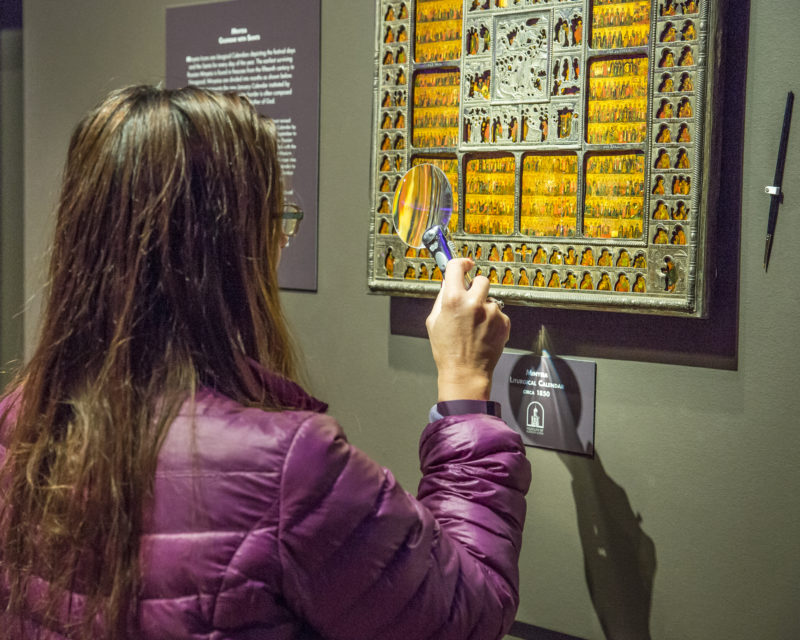The Museum of Russian Icons located in Clinton, Massachusetts, houses and displays one of the Western world’s largest collections of Orthodox Christian icons, religious artifacts, and Slavic folk arts. It illustrates the evolution of the Russian icon from its early Egyptian and Byzantine origins to the establishment of its own tradition. Fine Art Shippers spoke with Simon Morsink, the executive director of the museum, about its mission, unique position on the US museum map, and the ongoing rebranding.
The Museum of Russian Icons: Ancient Art in the Modern Context
What are some of the challenges related to managing a museum dedicated to a specific cultural or artistic tradition, such as Russian icons?
Simon Morsink: We hold a unique position on the American cultural map as the only specialized icon museum in this country. Indeed, promoting a niche museum is challenging, but at the same time, the uniqueness of the cultural experience that comes with it gives us a distinct advantage, which attracts visitors. I have worked with Russian icons all my life and for me, it is a vast and fascinating world. Russia’s rich culture and history, including its orthodox art tradition, are remarkable. And my role as the new executive director is to get this message across to our audience.
Do you focus on specific historical aspects and artistic features of Russian icons in your exhibition and educational practices?
The museum is currently undergoing a rebranding process, which was initiated two years ago following the passing of Gordon Langton, the museum’s founder and a great enthusiast and collector of Russian icons. I have taken on my role last May after the retirement of founding director Kent Russell, and we are now working on the development strategy and new ways of engaging audiences.
Over the past fifteen years, the museum has primarily focused on Russian icons and related aspects of Russian culture. One example is the recent exhibition dedicated to Soviet anti-religion propaganda posters. It’s interesting to observe the twist and turns of history: whereas in the Soviet Union religion was considered “opium for the people” and reduced to a relegated state, in modern Russia, the Orthodox Church holds significant power. In the future, we want to focus more on situating Russian icons within various contexts to highlight unexpected parallels with other cultures. An upcoming exhibition, for instance, will draw comparisons between Russian icons and Mexican retablos. We also plan to showcase Greek and Ethiopian icons to provide a more comprehensive understanding of the rich history of Eastern Christian art.
How do you plan to work with the permanent collection?
The core of our museum is the private collection of Gordon Langton which numbers over 1,000 pieces. It offers a comprehensive overview of Russian icons from the 15th to 19th century, with a particular emphasis on the 19th century. One of my goals is to refine and fill the gaps in our collection. We also intend to incorporate in it contemporary art inspired by icon painting. Of course, fundraising for the collection’s expansion is part of my job as well.
How do you see your place on the US art map? What audiences do you primarily work for?
We are located about one hour from Boston, and our current public includes the local and regional communities, as well as the more urban communities in Boston and Worcester. So these are important audiences we focus on. But we are ambitious. Our new website, which will be launched in October this year, will serve both domestic and international audiences. With time, we hope to attract visitors, collectors, dealers, and stakeholders from all over the world, and this is already happening. As a Dutch myself, I am a very good example of this.
You recently announced the opening of two research opportunities at the museum. What are your research goals as an institution? What contribution to the academic field do you seek to make?
An important part of our museum is the Center for Icon Studies, which we intend to develop further. We invite scholars to come here to explore our collection as part of their research. With thirty-five years of experience as a commercial gallery owner, I understand that to truly understand and appreciate an object, you need to hold it in your hands and experience it with your senses. Reading and working in archives are important components of research but they are not enough. We are also planning to host biannual conferences, and regular lectures, and offer internships.
What qualities do you think are necessary for a professional museum director?
I think it depends on the type of museum. Managerial qualities are key, and they include the ability to get along with people and navigate smoothly various situations that involve emotions. The museum director needs to be a good fundraiser as well, which requires both communication skills and strategic thinking. When it comes to a niche museum like ours, a profound knowledge and understanding of the collection are essential. But above all, I would say, you should be enjoying what you do and the company of the people you work with. This is what brings all the pieces of the puzzle together.
Photo courtesy of The Museum of Russian Icons


